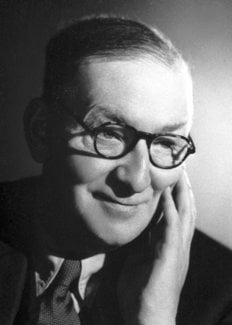John Cockcroft
Biographical

John Douglas Cockcroft was born at Todmorden, England, on May 27th, 1897. His family had for several generations been cotton manufacturers.
He was educated at Todmorden Secondary School and studied mathematics at Manchester University under Horace Lamb in 1914-1915. After serving in the First World War in the Royal Field Artillery he returned to Manchester to study electrical engineering at the College of Technology under Miles Walker. After two years apprenticeship with Metropolitan Vickers Electrical Company he went to St. John’s College, Cambridge, and took the Mathematical Tripos in 1924. He then worked under Lord Rutherford in the Cavendish Laboratory.
He first collaborated with P. Kapitsa in the production of intense magnetic fields and low temperatures. In 1928 he turned to work on the acceleration of protons by high voltages and was soon joined in this work by E.T.S. Walton. In 1932 they succeeded in transmuting lithium and boron by high energy protons. In 1933 artificial radioactivity was produced by protons and a wide variety of transmutations produced by protons and deuterons was studied. In 1934 he took charge of the Royal Society Mond Laboratory in Cambridge.
In 1929 he was elected to a Fellowship in St. John’s College and became successively University demonstrator, lecturer and in 1939 Jacksonian Professor of Natural Philosophy.
In September 1939 he took up a war-time appointment as Assistant Director of Scientific Research in the Ministry of Supply and started to work on the application of radar to coast and air defence problems. He was a member of the Tizard Mission to the United States in the autumn of 1940. After this he was appointed Head of the Air Defence Research and Development Establishment. In 1944 he went to Canada to take charge of the Canadian Atomic Energy project and became Director of the Montreal and Chalk River Laboratories until 1946 when he returned to England as Director of the Atomic Energy Research Establishment, Harwell.
For the period 1954-1959 he was scientific research member of the U.K. Atomic Energy Authority and has since continued this function on a part time basis. Election to Master, Churchill College, Cambridge, followed in October 1959. In addition he is Chancellor of the Australian National University, Canberra, and a past President of the Institute of Physics, the Physical Society (1960 to 1962) and the British Association for the Advancement of Science (1961 to 1963).
He has received honorary doctorates from some 19 universities and is a fellow or honorary member of many of the principal scientific societies. In addition, numerous honours and awards have also been bestowed upon him.
He married Eunice Elizabeth Crabtree in 1925 and has four daughters and a son.
This autobiography/biography was written at the time of the award and first published in the book series Les Prix Nobel. It was later edited and republished in Nobel Lectures. To cite this document, always state the source as shown above.
John Cockcroft died on September 18, 1967.
Nobel Prizes and laureates
Six prizes were awarded for achievements that have conferred the greatest benefit to humankind. The 12 laureates' work and discoveries range from proteins' structures and machine learning to fighting for a world free of nuclear weapons.
See them all presented here.
